HSS Connection Design Software
By Mike Manor, PE, MLSE
Technical Consultant, Steel Tube Institute
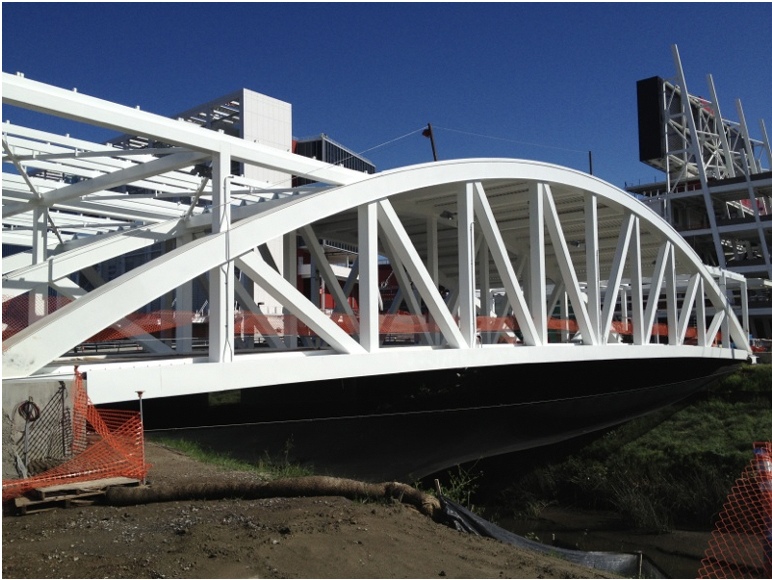
If you have ever looked through the AISC Specification and Manual to design a structural steel connection involving HSS, then you know there are a number of limit states to check and equations to solve. Even with the STI Limit States Tables as a guide through the maze, determining the capacity of a single connection by hand can take a fair amount of time. Using a spreadsheet certainly helps, but there are several conditional statements to track and verify. In situations like this, it may make sense to allow some computer software to do the heavy lifting so you can focus on the engineering task at hand. At this point, the question becomes, “With so many options, which software package is the best for me to use?” This article will review many of the software options currently available that specifically design HSS connections to help structural engineers make an informed decision based on their specific software needs.
Software Types
Connection software is split into two main categories. The first category is geared toward the design of connections in bulk for an entire building structure. In this type of software, the engineer or steel detailer would model all framing members in the structure. Next, all standard connection information for the project would be entered, such as connection type, bolt size, weld size, spacing, edge distance, loading information, etc. These standard connections are then automatically designed throughout the entire building frame. One of the strengths of this type of software is the minimal design time for the engineer because the software will both design and optimize all connections. Additionally, the software package updates the detailer’s model with the connection design information (i.e., copes) to assist the detailer in creating steel shop drawings for the project. Table 1 shows that Qnect and SDS/2 are two software packages that fit in this first category for connection design.
A drawback for the first connection software type is that it can be difficult to use when trying to design a small number of connections or nonstandard connections. Thus, there is a second category of connection design software that focuses instead on designing a single connection at a time, also referred to as stand-alone or component-based software. For each connection design, the parameters and loading information can be entered individually to quickly provide a capacity check as each piece of information is updated. Additionally, some of these connection software options can integrate with structural modeling software that engineers typically use. In this case, the loads can be directly transferred from the model into the connection software.
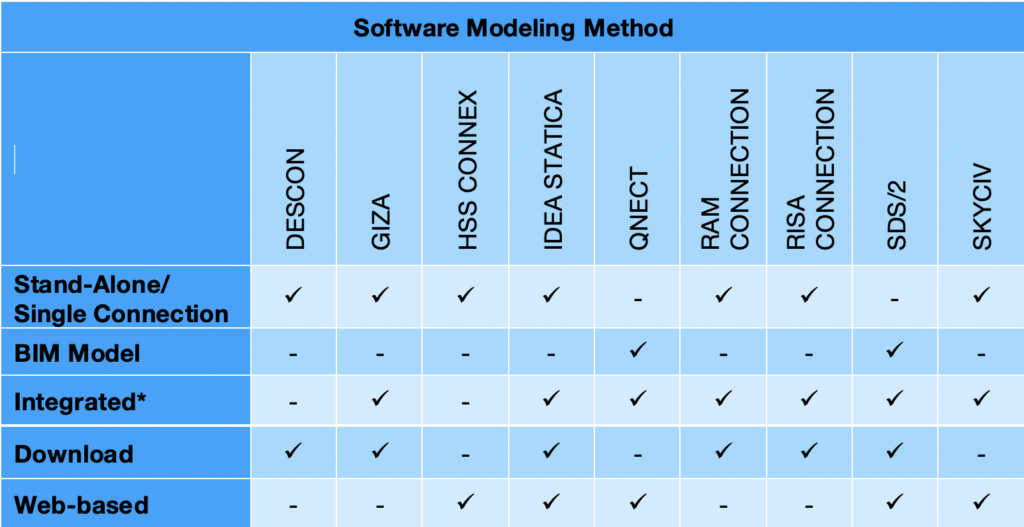
Table 1: Software Modeling Method
Review Items/Criteria
One item to keep in mind in HSS connections that differs from WF connections is that connections are often made to the face of the HSS section. This type of connection behaves more similarly to a connection to a WF web. The HSS face is supported by sidewalls at each end, similar to a WF web supported by flanges.
Due to this distinction, it is important to understand which software will properly design connections to closed HSS shapes as this design requires the consideration of many limit states that are unique to HSS. While most connection software packages available on the market can handle many of the typical wide flange connection cases, they may be more limited when it comes to designing HSS connections. Table 2 has a summary of the capabilities of each software grouped by connection type.
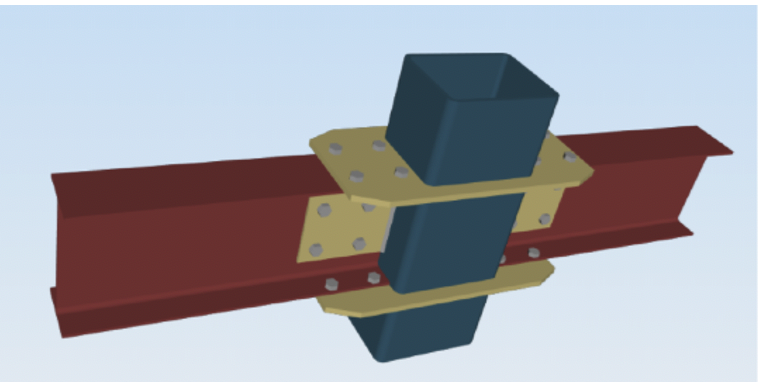
To break down the HSS connection types, here is a brief discussion of each. The first differentiation that must be made is whether the HSS member shape is round or rectangular as the connection mechanics for each shape require different equations from the code to determine the capacity. The first connection type is a wide flange beam supported by an HSS column. The shear connections have similarities to typical wide flange connections such as longitudinal shear tab, single angle or double angles. WT shapes may also be a good option for shear connections to HSS since the load can transfer closer to the HSS sidewalls. When moment is present at the connection, the moment can be transferred to the column through direct flange welding, flange plates and diaphragm plates, among other options (Ericksen 2014). See Figure 2.
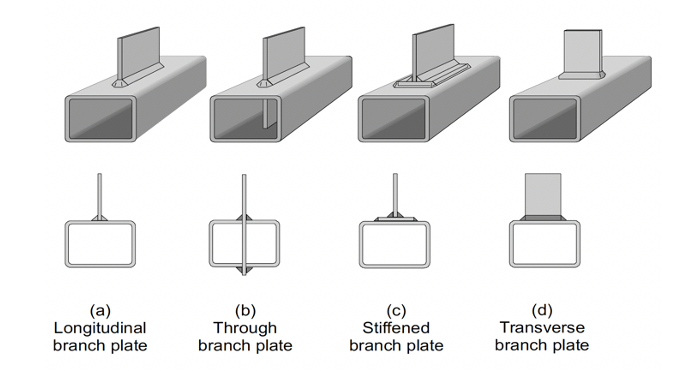
The next broad category of HSS connections are longitudinal and transverse plates. See Figure 3. These connections can transfer shear and axial loads. Some of the limit states required are punching, wall plastification, sidewall local yielding, among others (Packer 2015).
Another category of connections is HSS-to-HSS truss connections that primarily transfer axial loads but, in some cases, also transfer moment. See Figure 4. A few examples of the pertinent limit states are plastification, punching and local yielding due to uneven load distribution (Olson 2014).
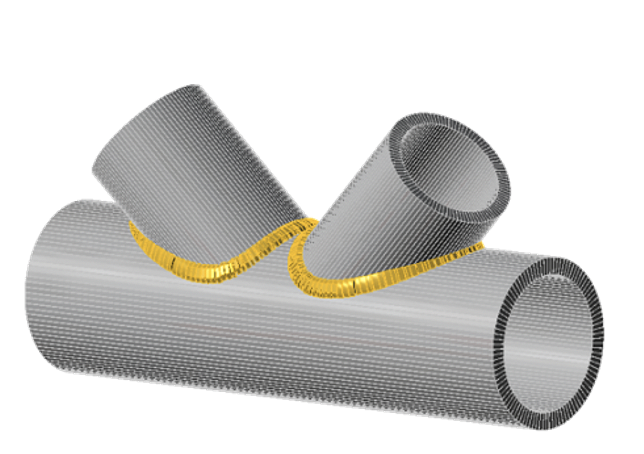
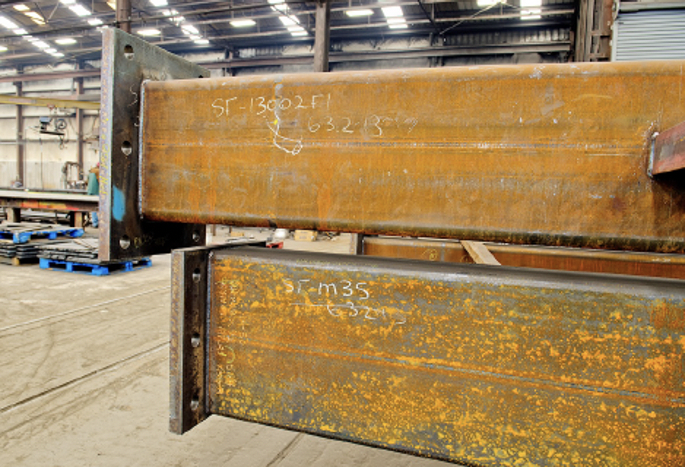
The final HSS connection category pertains to axial loading of HSS members. Connection types included in this category are cap plates, brace connections and base plates. Sometimes, the cap plate and base plate connections also include moment loading (Jacinto 2019, Olson 2017). See Figure 5. The final HSS connection category pertains to axial loading of HSS members. Connection types included in this category are cap plates, brace connections and base plates. Sometimes, the cap plate and base plate connections also include moment loading (Jacinto 2019, Olson 2017). See Figure 5.
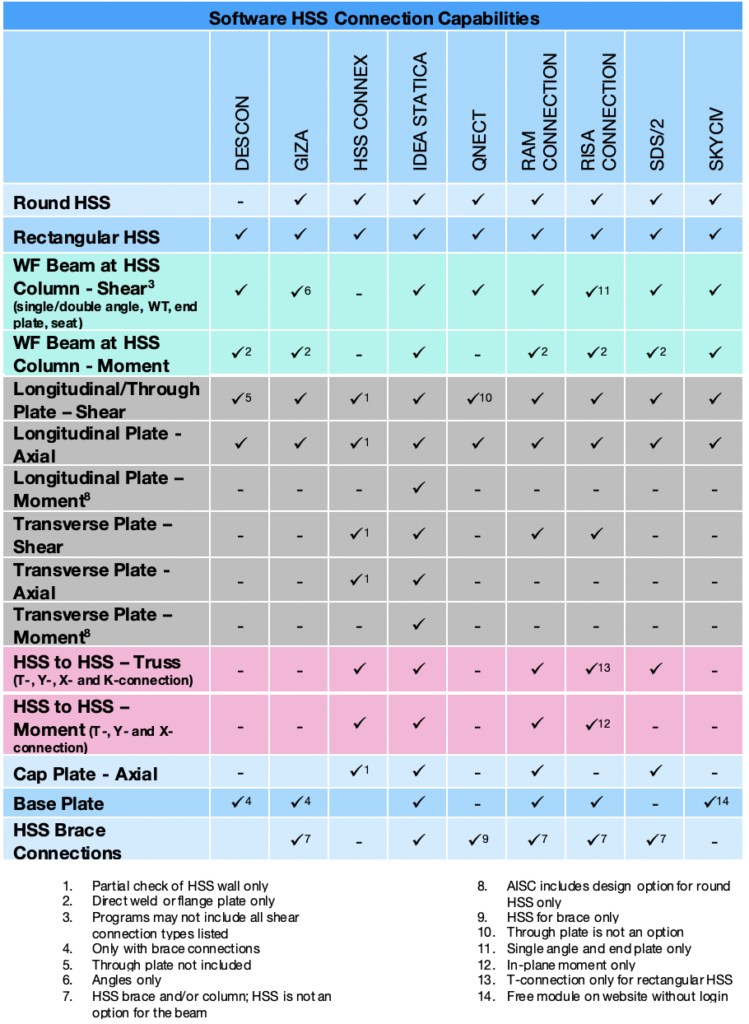
Software Packages Reviewed
Following is a brief overview description of each software package reviewed in alphabetical order. This list may not be all-inclusive but does include many of the HSS software packages available at the time of writing for this article. For each software listed, our review includes the options for accessibility, other programs it interacts with, and an explanation of the program’s particular strength or distinctions. For additional information, we recommend viewing the recording of the STI Webinar titled “HSS Connection Design Software”
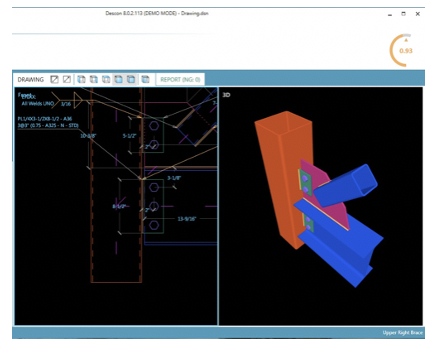
Descon
Access: Software download
Product Website: https://www.desconplus.com/
Software Integration: Stand-alone
Software Notes: Includes beam to square/rectangular HSS column connections as well as bracing connections to square/rectangular HSS columns.
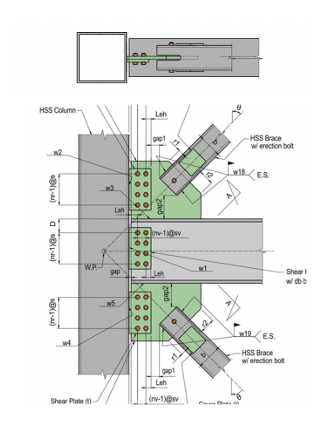
GIZA
Access: Software download
Product Website: https://www.gizasteel.com/
Software Integration: Stand-alone lite version or integration with Tekla Structures or Tekla Structural Designer
Software Notes: Import geometry and/or loads from Tekla Structures or Tekla Structural Designer. Adjust the connection then export changes back to Tekla to update the model.
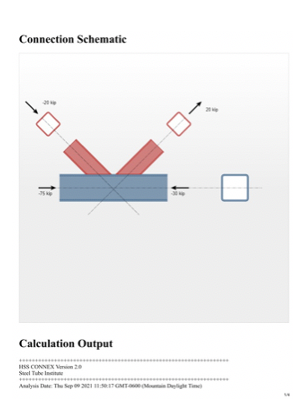
HSS Connex
Access: Online web browser
Product Website: https://steeltubeinstitute.org/hollow-structural-sections/hss-connex-tool/
Software Integration: Stand-alone
Software Notes: This software performs a quick check on the HSS member to ensure capacity of the HSS member at the connection during the member design to help avoid costly reinforcement or upsizing when connections are designed. HSS Connex only checks the HSS members and does not check the remainder of the connection including bolts, welds, connector plates, etc.
IDEA StatiCa
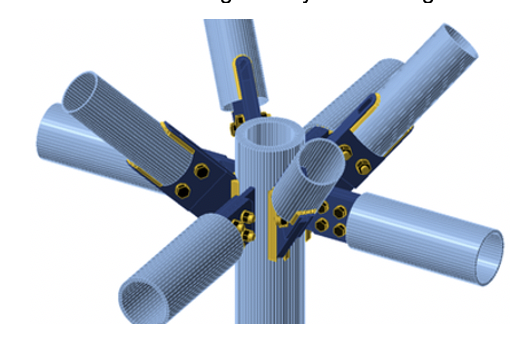
Access: Software download or web browser (lite version)
Product Website: https://www.ideastatica.com/connection-design and https://connection.ideastatica.com/ (lite version)
Software Integration: Stand-alone or integration with Tekla Structures, Autodesk Advance Steel and Revit as well as 14 different FEA software options (BIM links: https://www.ideastatica.com/bim)
Software Notes: This program performs a finite element analysis on connections and is able to analyze/design any connection geometry. There is also a free lite version that determines the adequacy of the HSS members based on geometry and loading.
Qnect
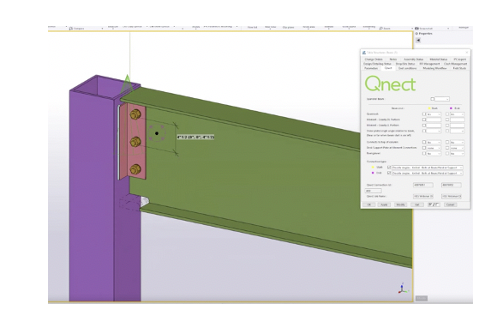
Access: Web browser in combination with TEKLA Structures
Product Website: https://www.qnect.com/
Software Integration: Integration with Tekla Structures (Tekla Structures is required for Qnect to function)
Software Notes: Rapid design and optimization of wide flange beam to HSS column shear connections throughout a full building model. Fabricator preferences are easily copied from one project to another, minimizing engineering time.
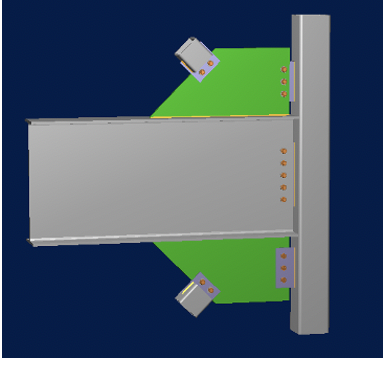
RAM Connection
Access: Software download
Product Website: https://www.bentley.com/en/products/product-line/structural-analysis-software/ram-connection
Software Integration: Stand-alone and integration with RAM Structural System, RAM Elements and STAAD.Pro
Software Notes: Wide array of HSS connection types to choose including truss connections (T-, Y-, X- and K-connections).
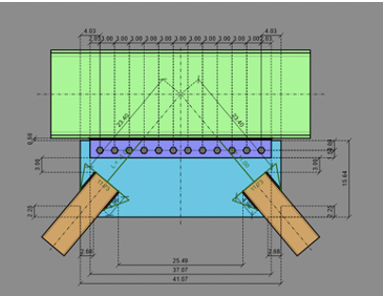
RISAConnection
Access: Software download
Product Website: https://risa.com/products/risaconnection
Software Integration: Stand-alone and integration with RISA 3D, RISA Floor and TEKLA
Software Notes: Includes shear, axial and moment connections for WF beam to HSS column connections, bracing connections to HSS columns, and HSS truss connections for single branch, T-connection and 90-degree angles only.
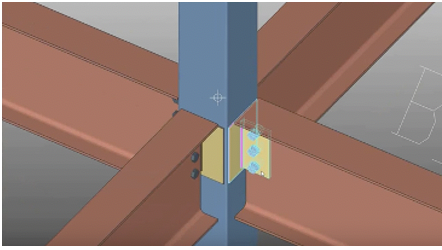
SDS2
Access: Software download
Product Website: https://sds2.com/steel-connection-design
Software Integration: Fully integrated in SDS2 detailing software
Software Notes: Detailing software automatically designs the connections based on design parameters as the framing members are input into the detailer’s model internally as part of the included software package.
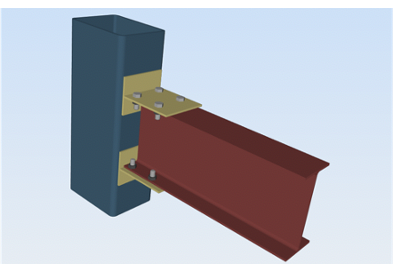
SKYCiv
Access: Online web browser
Product Website: https://skyciv.com/structural-software/connection-design/
Software Integration: Stand-alone and integration with SkyCiv S3D Modeler
Software Notes: The software is fully available with an up-to-date version from any web browser. It offers many different wide flange to HSS moment connection options including WT-connection, seat angle, flange through plate, flange collared plate and welded tee flange. There is also a base plate design module available for free on the website.
Software Output
Another item that may be helpful to be aware of for various software options are the steel codes that each one designs to as the basis for calculations as well as calculation output. Table 3 below summarizes calculation information for each software.
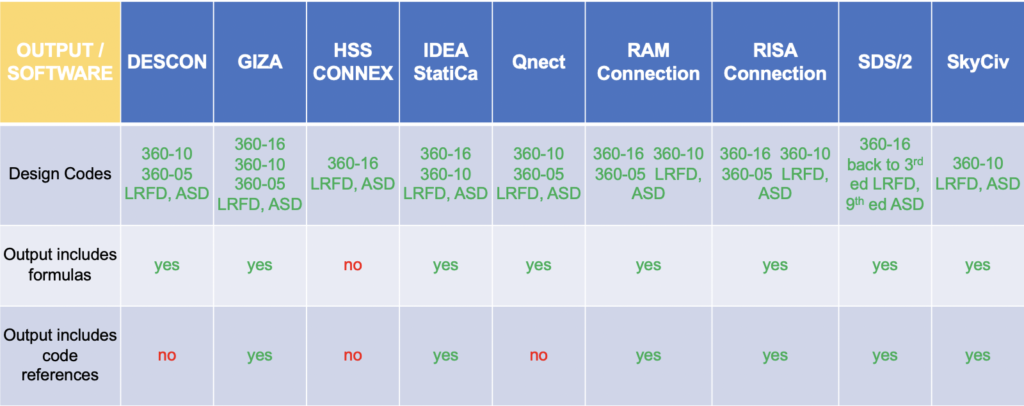
Concluding Thoughts
The intention of this article was to provide a brief overview of the HSS connection software packages available today to assist engineers in finding the package that may best fit their connection design needs. There are tables broadly showing what connection types each software package can assist an engineer with designing as well as which third-party software programs each can integrate with. Of course, there is no better way to find out which program to use for your unique situation than giving it a try yourself. The software options noted in the article either offer a free trial period or a guided demonstration. Additionally, all software options have customer support that can help answer any specific questions. We hope this article provides an idea of where to start when evaluating software for your HSS project. We welcome any questions you may have. Feel free to reach out to us at the STI Contact Us website page.
References
Ericksen, J. (October, 2014). “Wide-Flange Beam to HSS Column Moment Connections,” Steel Tube Institute.
Jacinto, C. (February, 2019). “HSS Limit States in Cap Plate Connections,” Steel Tube Institute.
McCormick, J. (September, 2016). “Square and Rectangular HSS-to-HSS Moment Connections,” Steel Tube Institute.
Olson, K. (November, 2014). “HSS-to-HSS Connections,” Steel Tube Institute.
Olson, K. (November, 2017). “Axially Loaded HSS Column to Base Plate Connections,” Steel Tube Institute.
Packer, J. (January, 2015) “Transverse Plate-to-Square/Rectangular HSS Connections,” Steel Tube Institute.
October 2021